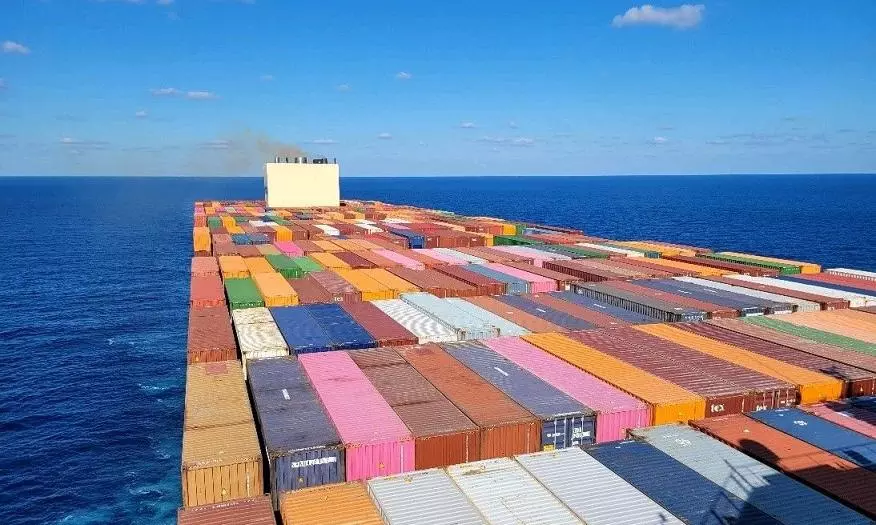Xeneta forecasts falls in freight rates, volumes for 2023
Ocean cargo volumes could fall by up to 2.5% & weak demand will force increased idling of vessels

After over two years of rising rates and overstretched capacity, the rapidly cooling ocean freight market looks set for an "extremely challenging" 2023, according to Oslo-based Xeneta.
"An in-depth analysis of the latest real-time ocean and air freight rates, combined with expert trend forecasts, suggests that ocean cargo volumes could fall by up to 2.5 percent, rates will drop significantly and weak demand will force increased idling of vessels," says the latest update.
The air freight market, analysts predict, will also face a turbulent twelve months, the update said.
Out of balance
From climbing to historical highs during the global pandemic, ocean freight rates have fallen away – and in the case of spot rates, dramatically so – since the summer. "Xeneta's market report, built on the foundation of the team's crowd-sourced data from leading global shippers, suggests there'll be no change in course for 2023 with challenging macroeconomic and geopolitical outlooks undermining confidence."
Patrik Berglund, CEO, Xeneta says: "The cost-of-living crisis is eating into consumer spending power, leaving little appetite for imported, containerised goods. With no sign of a global panacea to remedy that, we'd expect ocean freight volumes to drop, possibly by around 2.5 percent. That said, if the economic situation deteriorates further, it could be even more.
"Allied to dropping volumes, we have a growing world fleet, with a nominal inflow of 1.65 million TEU of capacity. Some demolitions will dent that growth but we still expect an increase in capacity of 5.9 percent. Even if demolitions double from our current level of expectations, the industry would still be looking at an almost 5 percent expansion."
The upshot of that, Berglund says, is overcapacity, necessitating an increased idling of assets. "From a current position of next to nothing, Xeneta forecasts idling of up to 1m TEU or maybe even more," says Berglund.
The cocktail of weak demand, dropping volumes, and an increase in capacity will inevitably impact negatively on rates, says Berglund. "We expect to see significant reductions. Carriers have proved adept at protecting and elevating rates during Covid but with too much capacity and easing port congestion on most major trade lanes, they'll be fighting losing battles in 2023. We could see spot rates on some key corridors drop below pre-pandemic levels during the first half of 2023 while long-term rates will fall rapidly as older, expensive contracts expire, and new, far lower contracts are signed. However, long-term rates will not drop below spot rates during the first half of 2023.
"As far as upcoming contract negotiations go, it's imperative to keep an eye on the very latest market data to obtain optimal value. However, those talks will be difficult for all parties. The carriers will be desperate for volumes but shippers won't have the high volumes that unlock the best prices. What we might see is that freight forwarders are the big winners as they can find a sweet spot serving the SMEs while playing the short market against carriers. Regardless, there's both opportunity and challenges ahead, in the short- and long-term."
Fasten your seat belts
One area where the ocean freight market may benefit is from a potential reduction in air freight, the update added.
The sector faces a "bumpy ride" as lower ocean costs and better schedule reliability (from easing port congestion and available capacity) may tempt some shippers to make a modal shift.
"To be fair, a shift in general volumes wouldn't be too significant for the ocean freight carriers but it would strongly impact on the air segment where cargoes are obviously far smaller."
Berglund adds that increasing belly capacity, with easing travel restrictions, will be supplemented by the arrival of conversion and freighter orders placed during the air cargo peak. "This will lead the air segment to join its ocean freight sibling in the overcapacity corner, with "a negative impact on load factors and rates."
Too many headwinds
Berglund underlines the complexity of challenges facing the industry with economic uncertainty, geopolitical concern ("not just relating to Ukraine"), ongoing industrial action on logistics chains, China's continued zero-Covid policy and the combination of weak demand, easing congestion and increased freight capacity.
"I'd like to wish everyone a Happy New Year in advance, but there's not that much for the industry to look forward to at present," he says.
"However, as we've seen over the past couple of years, predictions are almost impossible to make in a world that moves ever-faster, so there may be unknown factors waiting in the wings to influence markets."
If the industry has learnt anything in the past couple of years, it is that planning for the unthinkable "what ifs" must be top of mind, Berglund added.



